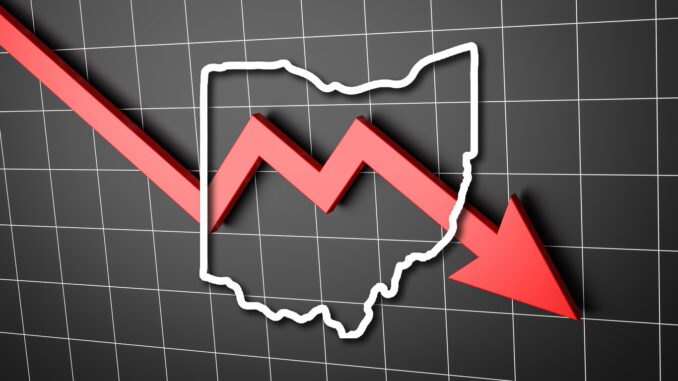
Bright Spots in Ohio Include Auto Retail and Real Estate
By Terry Troy
As expected, the nation’s real Gross Domestic Product took a header in the second quarter of this year, tumbling 32.9% according to an advance estimate released by the Bureau of Economic Analysis. While the number represents the worst decrease in history, it is still not as bad as the 34.5% drop predicted by some analysts. In the first quarter, real GDP decreased by 5%.
While the overall GDP news was negative, there are a few bright spots. Long considered the largest purchase a consumer will ever make, the residential real estate market in Ohio is robust, indicating long-term consumer confidence in the market
Activity in the Ohio housing marketplace stabilized in June, as the pace of sales nearly matched the level of deal closings that occurred during the month a year ago, according to Ohio REALTORS, the trade organization of the real estate industry in Ohio.

“The Ohio housing marketplace, which experienced a significant decline in sales activity since the onset of the COVID-19 pandemic, regained its footing somewhat in June,” said Chris Reese, president of Ohio REALTORS.
“It’s a positive sign that sales activity nearly matched levels from a year ago, while also posting gains in the average sales price across the state.
“The market’s return to normalcy is a clear indication that consumers appreciate that housing is a solid, long-term investment,” Reese added. “While historic low mortgage rates will certainly help boost interest in the market in the near term, we’re also hopeful that we’ll see an uptick in the number of homes listed for sale and an increase home construction to meet buyer demands.”
The new vehicle market, long considered the second largest purchase a consumer will make, is also enjoying something of a rebound. In July, the National Automobile Dealers Association (NADA) issued an analysis of U.S. auto sales and the economy following the second quarter of the year, a period when dealers and the U.S. economy continued experiencing the impact the coronavirus pandemic, but also began seeing an upturn.
“Vehicle sales have continued to show signs of recovery after bottoming out in April at a SAAR (Seasonally Adjusted Annual Rate) of 8.6 million units, the lowest on record since the federal government began tracking auto sales,” said NADA chief economist Patrick Manzi. “June’s SAAR of 13.05 million units was a significant improvement over April.”
During this quarter, retail sales recovered much more quickly than fleet sales from the effects of the COVID-19 pandemic. Fleet sales were down year-over-year by a 72% in May while retail sales only fell by 17%. In June fleet sales were down year-over-year by 73% while retail sales were off by only 6%. Several major rental car companies cancelled or significantly reduced their fleet orders this year causing fleet sales to fall dramatically.
While sales figures for July are expected in just a few days, the Greater Cleveland Automobile Dealers’ Association (GCADA), reported that sales of new vehicles were off by just .82% for the month of June, with franchised dealers selling a total of 21,045 vehicles in June of 2020, compared with 21,218 in the month a year prior. The Greater Cleveland and Northern Ohio marketplace have historically lead the auto industry out of recessions and downturns.

“Many manufacturers resumed building and shipping vehicles in June, providing much-needed inventory to the dealers,” said Louis A. Vitantonio, president of the GCADA. “Low interest rates and numerous attractive offers have brought consumers back into the marketplace.”



